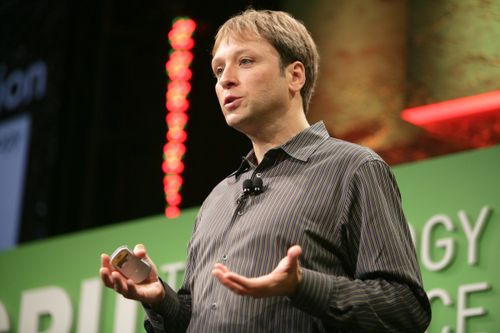News
This article originally appeared in NVISION Magazine (Summer 2010), a brand-new, cutting-edge magazine dedicated to showcasing the coolest and graphically intense entertainment. NVISION is published by Future US in association with and licensed by NVIDIA.
What do you get when you mix some of the greatest scientific minds of our time with a university that sees the societal and academic benefits of parallel computing and a tech-savvy professor who's so psyched about GPUs that you can feel it in his words? You get potential solutions to some of the world's greatest mysteries for starters. You also get a small army of students who believe they're embarking on a future that might just push sequential (CPU-based) computing and old school lab work into a background role. And as a very welcome bonus, you also get a CUDA Center of Excellence designation.
Established in 2008 to recognize institutions that embrace the concept of parallel computing and use it in ways that propel the technology forward, the CUDA Center of Excellence program has just recently recognized Harvard University, and Hanspeter Pfister couldn't be happier. A longtime GPU-proponent, Pfister, who sports the elongated title of "Gordon McKay Professor of the Practice of Computer Science," teaches a course called Massively Parallel Computing and strongly believes his institution is fully worthy of the accolades.

"Harvard is unique in GPU computing," says Pfister, "because we have some of the world's best scientists doing cutting-edge research on some of the great scientific challenges of our times. How is the brain wired? How did the universe start? How does matter interact at the quantum level? how can we predict and prevent heart attacks? these and other projects at Harvard leverage GPU computing for what I call high-throughput science, ranging from radio astronomy and neuroscience to quantum chemistry and physics."
GPUs EVERYWHERE YOU LOOK
Indeed, these days Harvard is veritably awash in GPUs. You'll find not one but two GUP_based clusters/supercomputers on campus, the first with 16 quad-core CPUs and no less than 32 (!) NVIDIA Telsa T10 GPUs divided equally over eight NVIDIA S1070 rack mount units. The second cluster? Virtually identical to the first.
But GPU clusters are just part of the deal. Beyond them, Harvard boasts 30 Quadro FX4800 cards in an instructional classroom at its Harvard Extension School, various desktop systems throughout the campus fitted with high-end Tesla C1060s and Quadro GPUs, and a Femi pre-production unit that's now being made available to the wider scientific/GPU community in Boston.
Pfister, who carries a Ph.D. in Computer Science and an M.S. in Electrical Engineering, is no stranger to parallel computing. He's long utilized GPUs for research in computer graphics and visualization, and indeed was so entranced with their potential that he unabashedly admits he hacked a few back in the day for GPGPU (general purpose computing on GPUs). But Pfister's hacker days ended when he enlisted at Harvard.
"When I joined Harvard three years ago, I was immediately struck by the amazing science research going on," he says. "It then turned out that GPU computing was the right approach for many of the projects. This was after NVIDIA had introduced CUDA, which was a huge game-changer for the whole GPU computing community. All of a sudden it was much easier to use GPUs for scientific applications, and performance and productivity increased dramatically." Assisted by David Luebke at NVIDIA and the NVIDIA Professional Partnership Program, Pfister soon had access to the latest hardware and immediately began putting it to good use.
THE FUTURE IS BRIGHT
Pfister calls the CUDA Center for Excellent designation "a great honor" and regards the symbiotic nature of the program as a win-win for everyone. "Harvard faculty integrates the CUDA software environment into their curriculum; scientists at Harvard leverage the parallel architecture to accelerate their research; NVIDIA engineers collaborate within Harvard scientists to solve problems in visual scientific computing; and NVIDIA provides the financial support and hardware donations to Harvard for the development of parallel computing facilities and the continuation of its research programs." A recent $2 million dollar grant from the National Science Foundation has only added to the excitement.
So, what's on the immediate menu for the Harvard GPU computing crowd? How about a supercomputer plunked in the middle of the Australian outback, working hand-in-hand with a massive radio telescope known as the Murchison Widefield Array to deliver real-time analysis of radio signals from the pre-galactic universe? Or research circulatory disease---one of the chief causes of mortality in the industrialized world---where a Tesla 870 has proven ten times faster than an Intel Xeon 2.0GHz CPU for modeling key components of blood-flow problems at the cellular and molecular levels. And let us not forget the brain---the mammalian brain to be exact---where Harvard and the Harvard Center for Brain Science are now implementing GPUs to help visualize neural processes and undersand nano-scale neuronal circuitry.
We'll leave the last word to Pfister. "Now, we are really on a roll."
By Gord Goble.
Cutting-edge science delivered direct to your inbox.
Join the Harvard SEAS mailing list.
